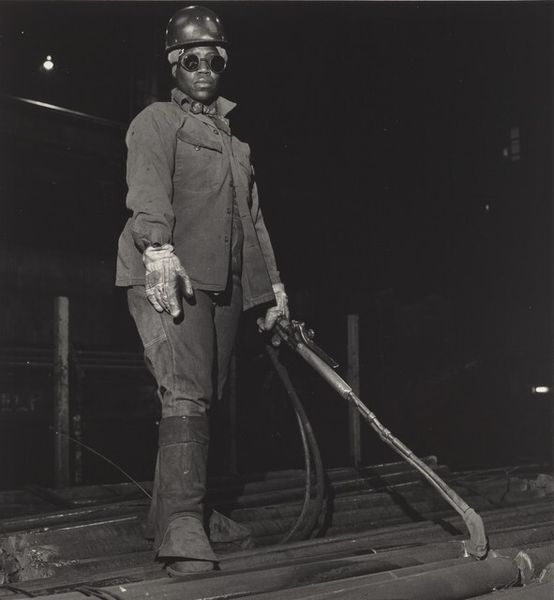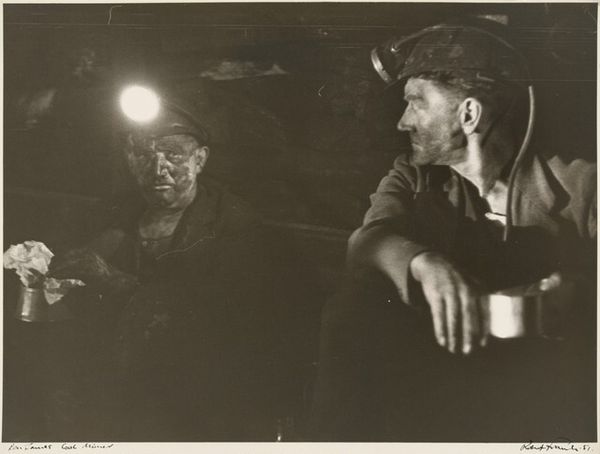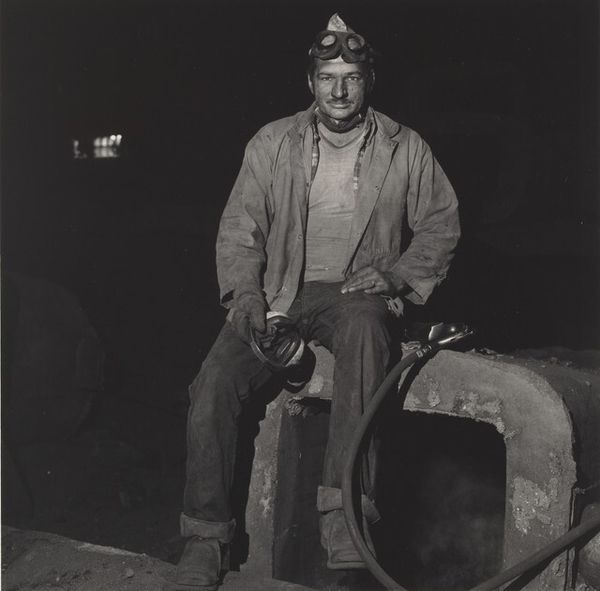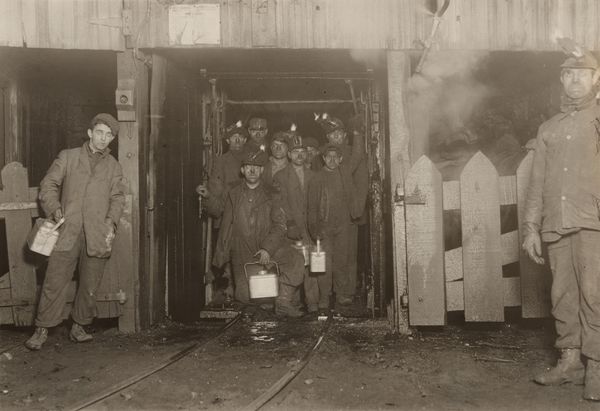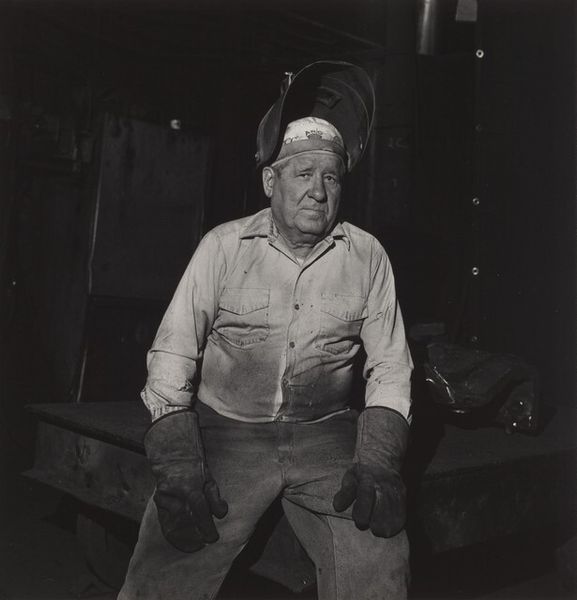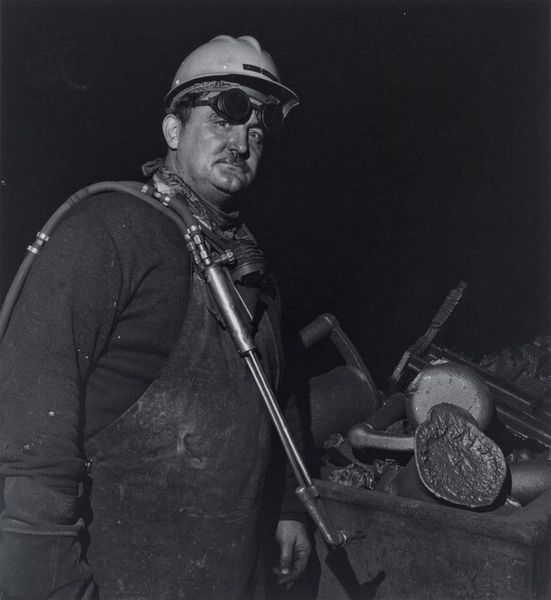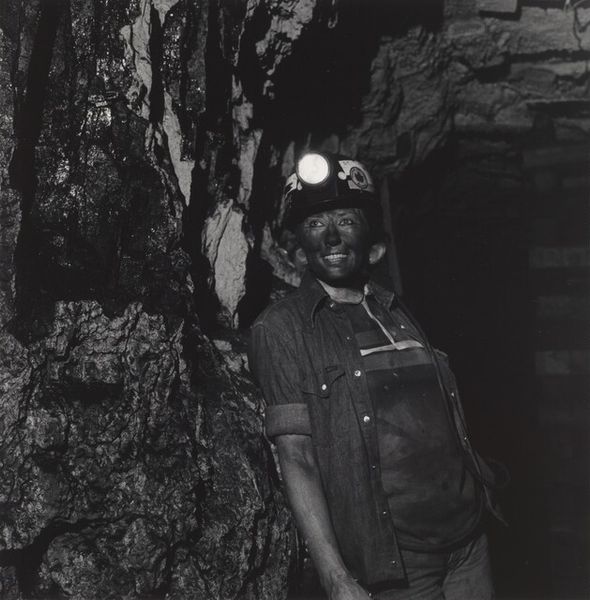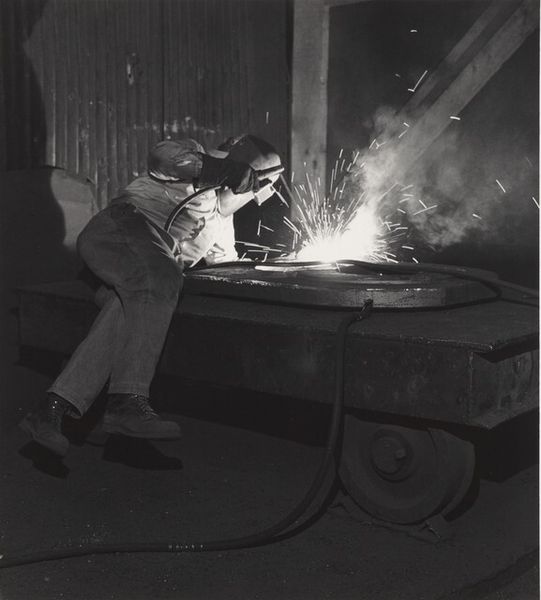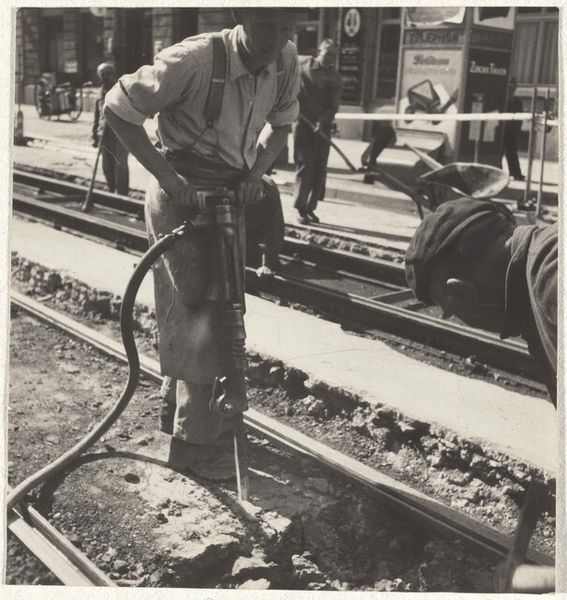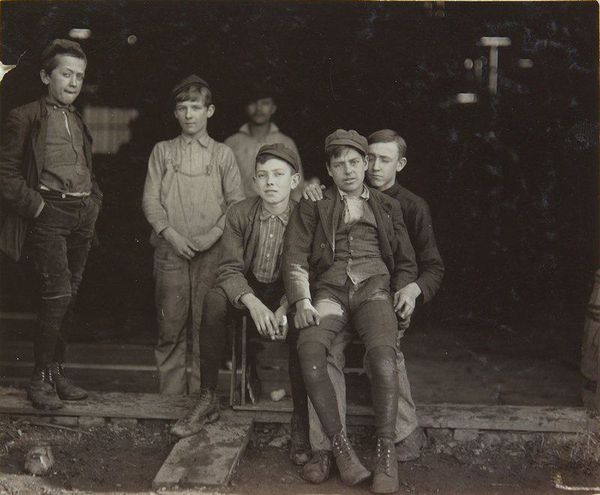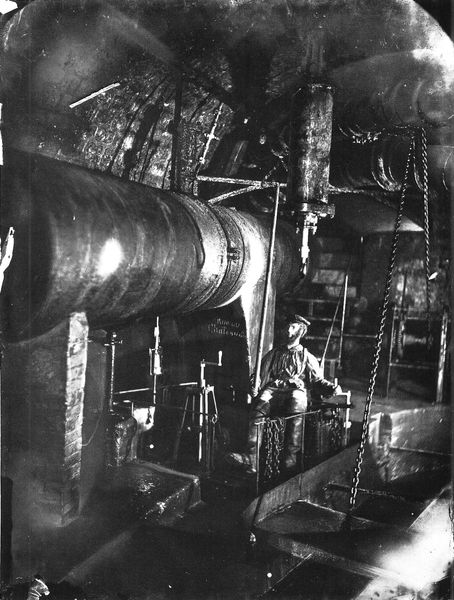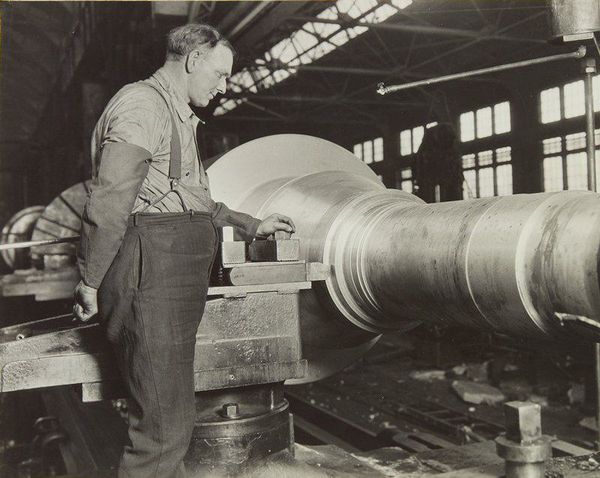
photography, gelatin-silver-print
#
portrait
#
social-realism
#
photography
#
black-arts-movement
#
gelatin-silver-print
#
ashcan-school
#
modernism
#
realism
Dimensions: image: 18.6 x 16.3 cm (7 5/16 x 6 7/16 in.) sheet: 25.2 x 20.3 cm (9 15/16 x 8 in.)
Copyright: National Gallery of Art: CC0 1.0
Editor: This is Milton Rogovin's "Hanna Furnace," from his "Working People" series, taken between 1977 and 1978. It's a gelatin-silver print, and it's incredibly striking. The subject looks exhausted, almost defeated. What do you see in this piece beyond the initial impression? Curator: It's tempting to read that exhaustion as defeat, isn't it? But I think there's a strength here too, a resilience etched onto his face, and even in the way he leans against the machinery. Rogovin dedicated his life to documenting the lives of working-class people, particularly those whose labor was often invisible. How does this photograph speak to the social and economic forces at play in the late 70s? Editor: I guess I hadn’t really considered the historical context beyond it being a portrait of a steel worker. It’s interesting you mention him being ‘invisible’ because this image makes me think of the decline of American manufacturing, especially steel, during that period and the impact it had on communities. Was Rogovin trying to make these workers seen at a time when their livelihoods were threatened? Curator: Absolutely. This image becomes a form of social activism. Consider the Black Arts Movement—the way Rogovin used realism to amplify marginalized voices echoes their concerns. Also, think about who benefits from the steel he's producing. Are the risks and difficulties this man endures shared equitably with those who profit from his labor? Is his identity reduced to only labor and work? Editor: That shifts my perspective a lot. I initially saw an individual, but now I understand the photograph's a broader commentary. The sweat on his clothes, the dirt on his boots...it’s not just about *him*. Curator: Precisely! Rogovin is asking us to confront systems of power and question the human cost of industry. It also helps me see workers not as a unit of labor, but a whole, complicated person. Editor: Wow, I didn't expect to see so much depth in one photograph. Thank you for that. Curator: And thank you for bringing a fresh eye to the work. It’s crucial we keep engaging with these images and challenging the narratives they present.
Comments
No comments
Be the first to comment and join the conversation on the ultimate creative platform.


